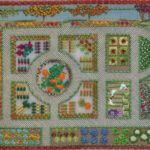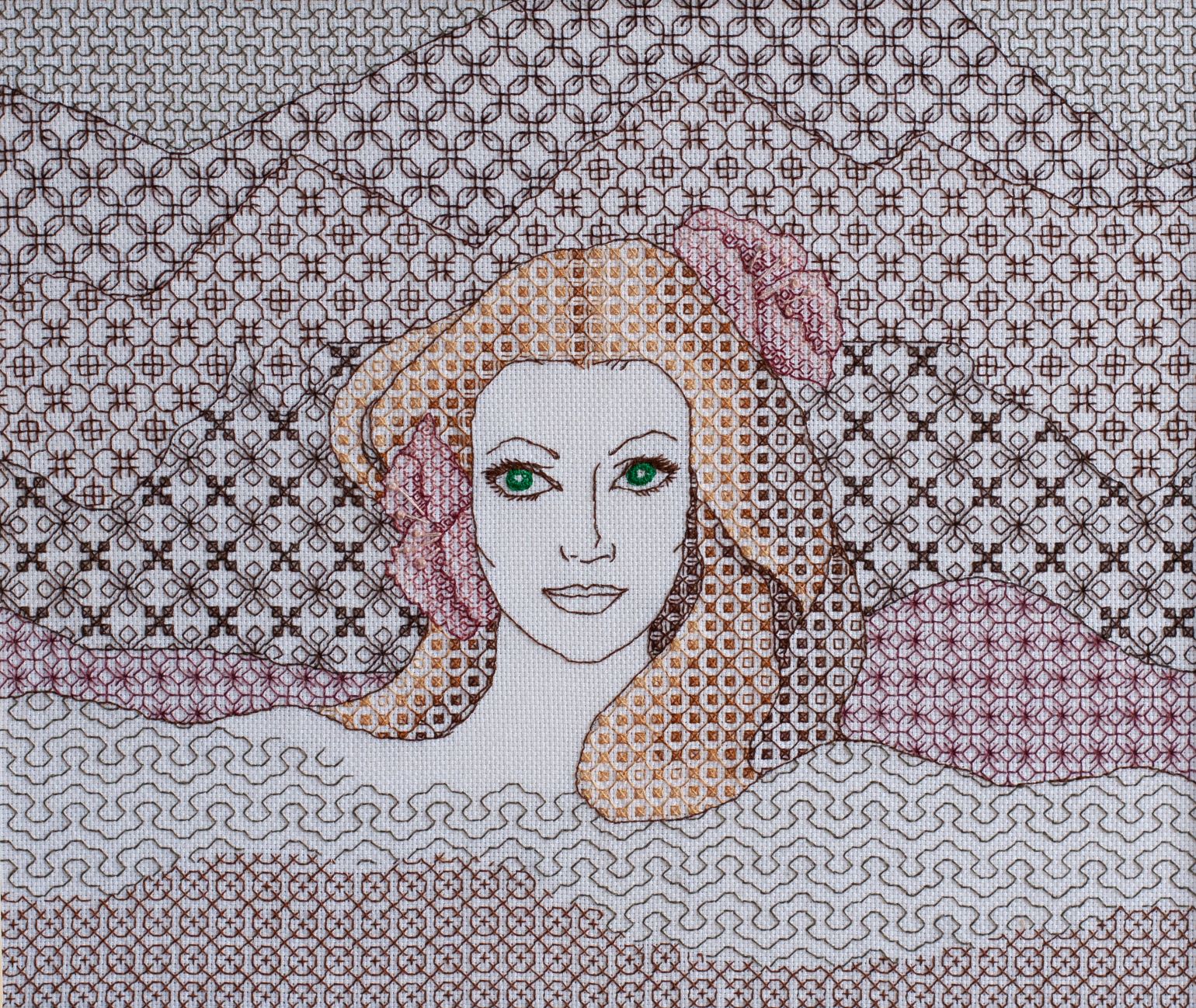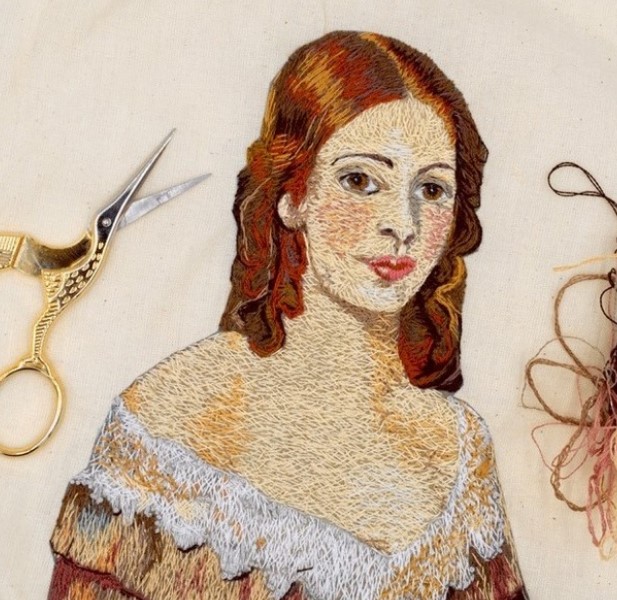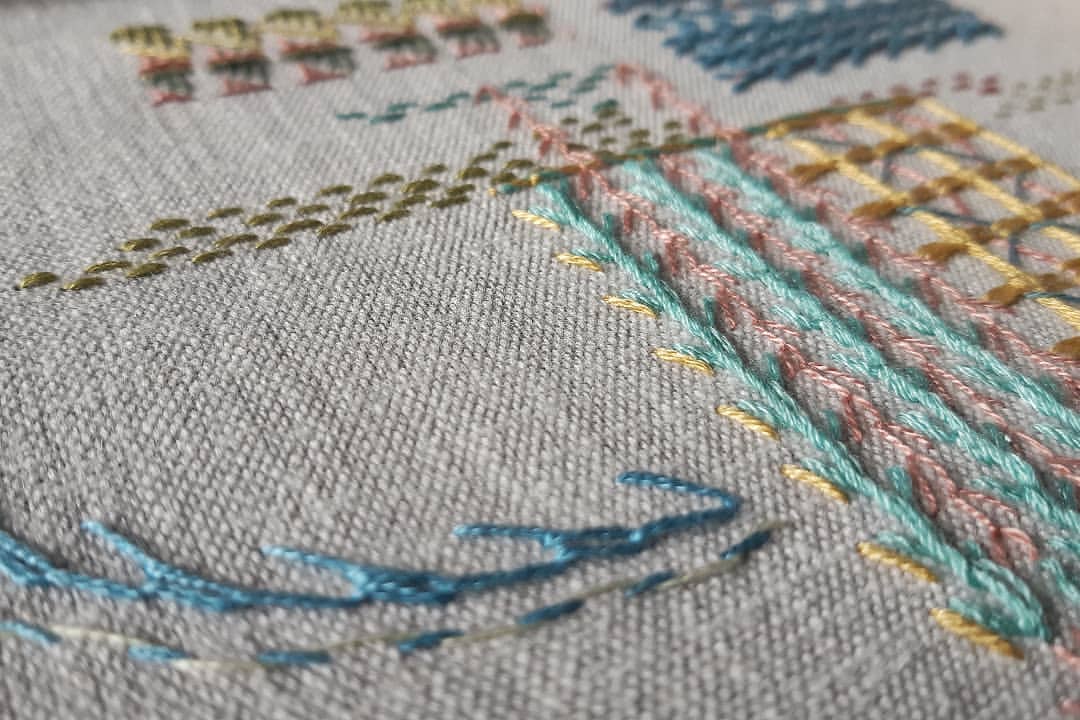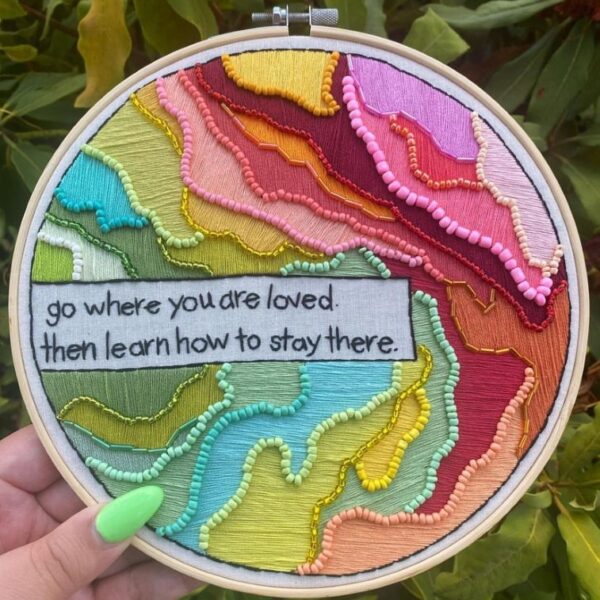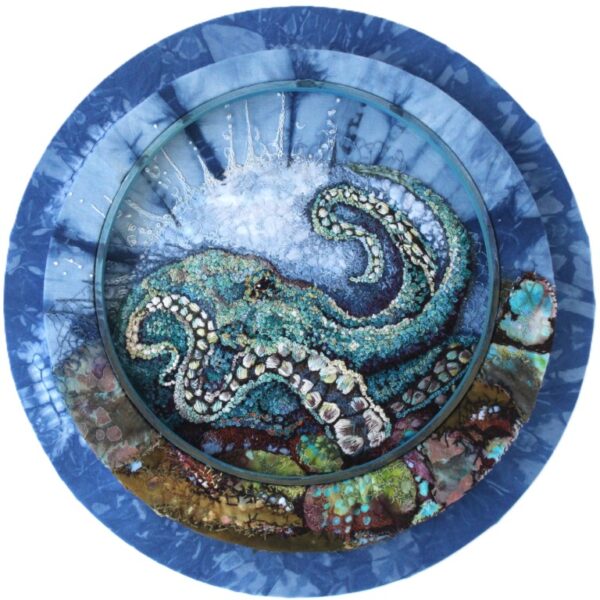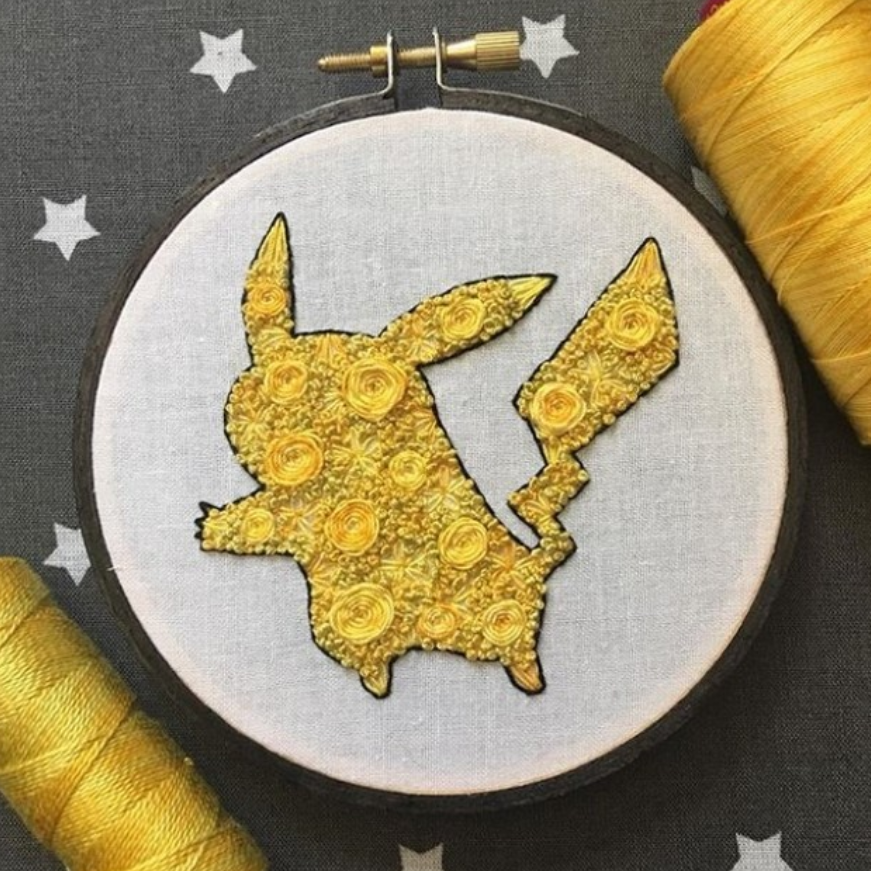Technique: Cross stitch
Place of Origin: 7th century
Earliest known date: The earliest evidence of cross stitch dates back to 6th century BCE, with a fragment of linen cloth embroidered with wool found in a Coptic tomb in Egypt. This piece of cloth included early examples of cross stitch. The roots of cross stitch embroidery developed in China during the Tang Dynasty (618-907 CE), where it was likely worked with silk threads. It then spread to Russia and westward via trade on the Silk Road.
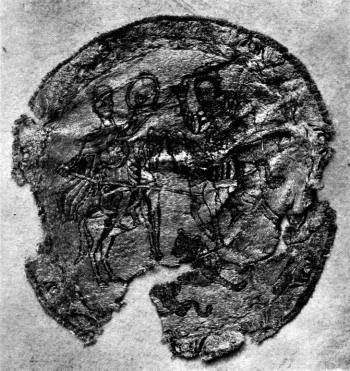
History: Many historians believe cross stitch was influenced by the blackwork technique, which the Moors brought to Spain around 711 CE. The Spanish princess and then English queen Catherine of Aragon, first wife of King Henry the VIII, stitched blackwork into her husband’s and her own clothing. The cross stitch technique exploded in popularity in the 16 century. During this time, folk art and cross stitch flourished, with stitchers embroidering cross stitch designs on their home linens and clothing.
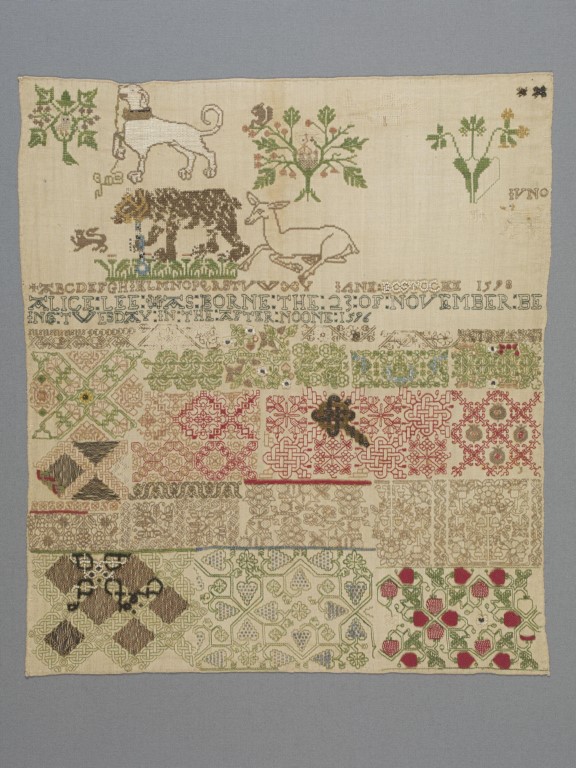
Cross stitch work led to sampler making. With pattern books not yet available, stitchers took to recording examples of needlework and pattern motifs on long strips of fabric, giving rise to the sampler. These samplers often doubled as personal records, bearing initials, dates, and moral or religious verses.
In the 16th and 17th centuries, cross stitch took on regional identities, with styles reflecting local culture and tradition. For example, Eastern European and Scandinavian designs emphasized geometric patterns and bright colors, while Chinese cross stitch focused on floral motifs and symmetrical designs.
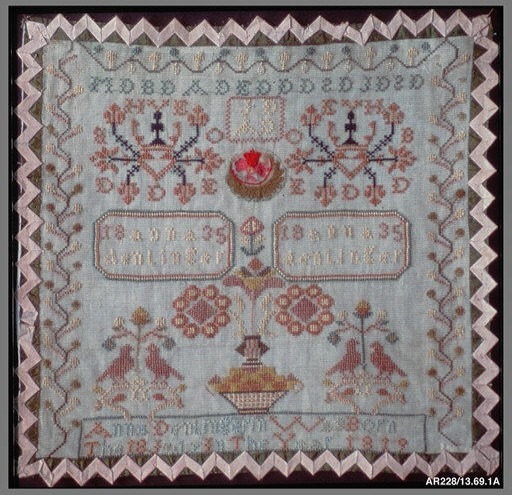
The Industrial Revolution brought significant changes to cross stitch. Mass production of patterns, threads, and fabrics made it more accessible to the middle class. Printed patterns and kits became popular in the Victorian era, and cross stitch grew from a skill for necessity to a beloved leisure activity.
In modern times, cross stitch continues to thrive, blending traditional and contemporary aesthetics. The late 20th century saw a cross stitch renaissance with a focus on DIY culture, and today, cross stitch enjoys popularity as both a hobby and an art form. Digital patterns and online communities have made it easier than ever for stitchers to connect and innovate, keeping the craft vibrant and relevant.
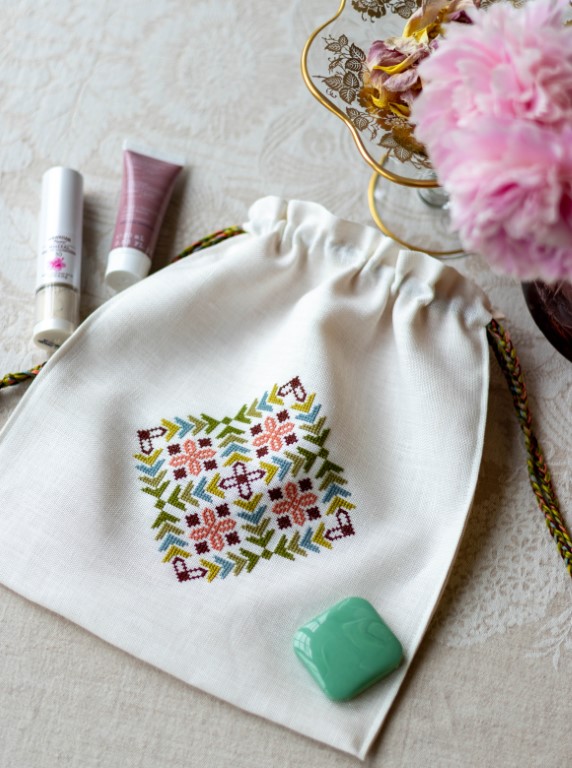
Materials, Techniques, and Stitches: Aida cloth, a woven fabric with an open, even weave and visible grid, is a favorite among cross stitch beginners for its ease of use. The hallmark of cross stitch is the basic X-shaped stitch, made by crossing two diagonal stitches over a grid square—hence the popularity of Aida cloth. Counted cross stitch is the most common approach, where stitchers count the fabric’s threads to place stitches accurately.
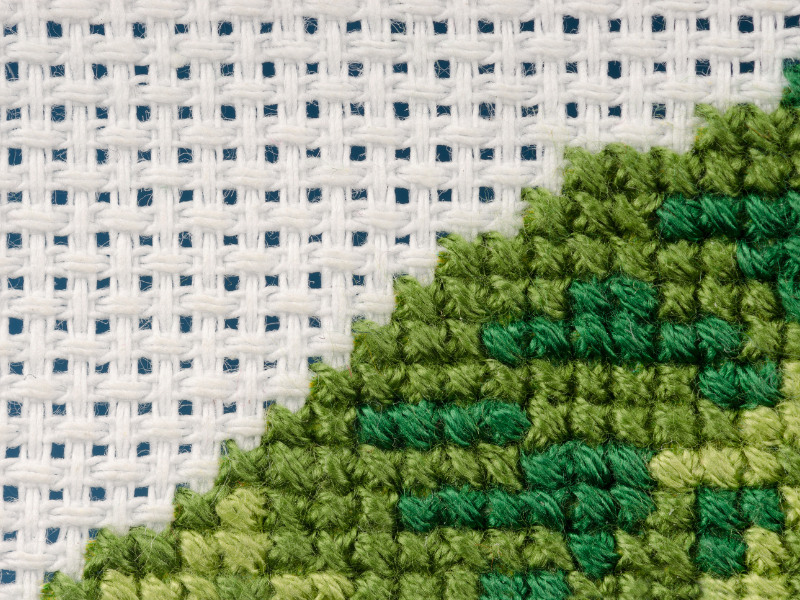
Other options include evenweave fabric and linen, which offer a finer texture and are popular among advanced stitchers. For those seeking a simpler option, stamped cross stitch provides a pre-printed design on the fabric, eliminating the need for counting. This method is ideal for beginners or anyone looking for a more relaxing project.
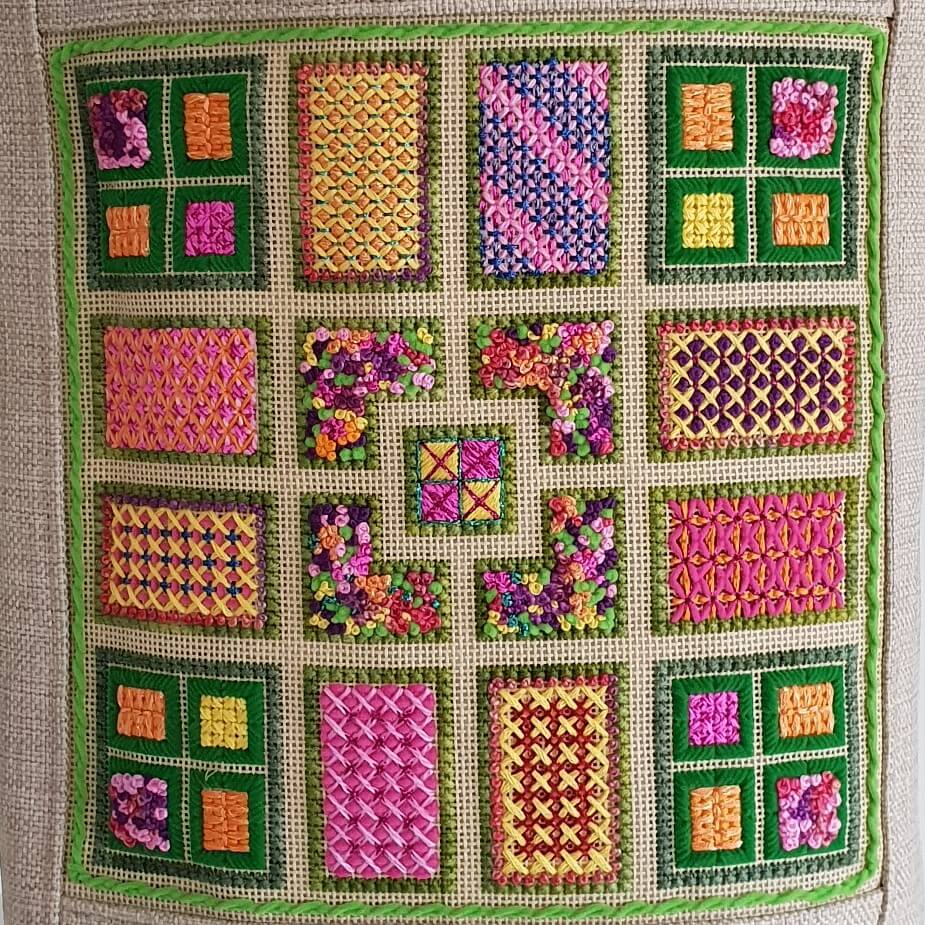
Threads are typically stranded cotton floss, available in a wide range of colors. Each floss is made up of six strands, allowing stitchers to adjust the thickness of their stitches. Embroidery hoops or frames are used to hold the fabric taut, ensuring neat and even stitching. Needles with blunt tips, called tapestry needles, are preferred to prevent damage to the fabric.

Although the basic X-shaped stitch is central to cross stitch, other stitches can enhance a design. Backstitch is often used for outlining, adding definition and detail to motifs. Quarter stitches and three-quarter stitches allow for greater precision, especially in curved designs. For texture and emphasis, some patterns incorporate French knots, adding a dimensional effect to elements like flower centers or eyes.
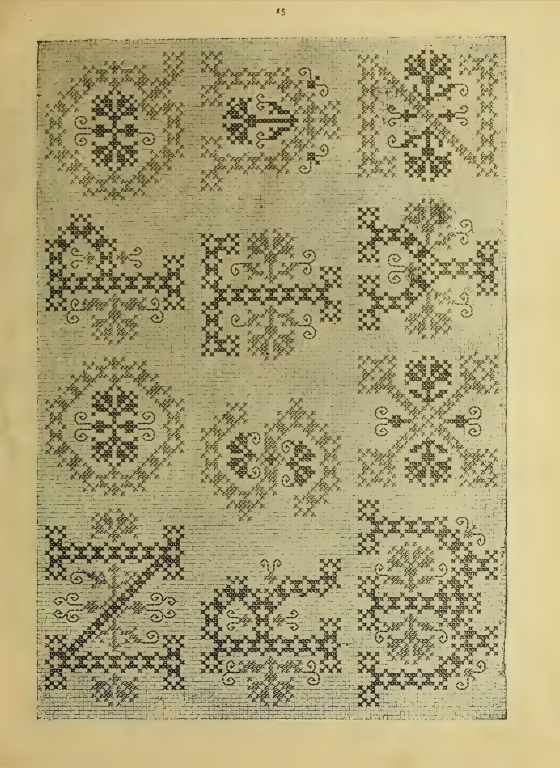
Motifs: Cross stitch motifs are as varied as the cultures that have embraced the craft. Traditional motifs often reflect local heritage, such as floral designs in European patterns or geometric shapes in Middle Eastern and Central Asian textiles. In Scandinavian cross stitch, motifs frequently include stars, hearts, and snowflakes, symbolizing nature and home.
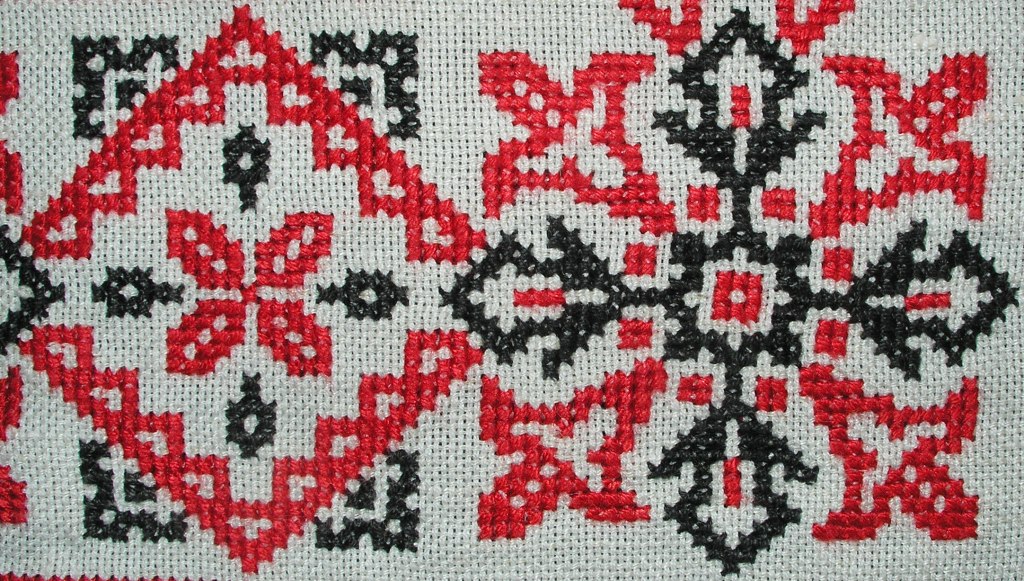
Religious and symbolic imagery has long been a staple of cross stitch, particularly in samplers. Crosses, doves, and angels appear in many historical designs, reflecting faith and devotion. Similarly, alphabets and numbers were common, serving both as decorative elements and as tools for teaching literacy.
Modern cross stitchers often draw inspiration from pop culture, creating humorous or topical designs that reflect contemporary life. Quotes, memes, and pixel art-style patterns have become popular in recent years, blending tradition with modern aesthetics.
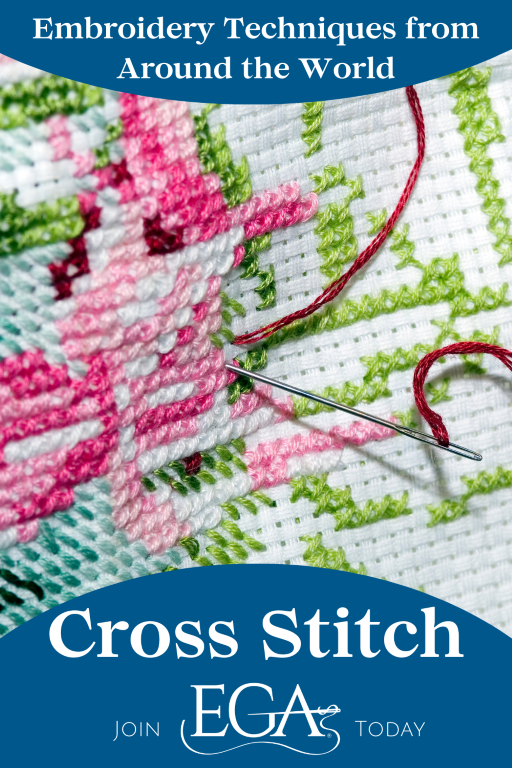
Cross-stitch. (2024, December 16). In Wikipedia. https://en.wikipedia.org/wiki/Cross-stitch
Verso, J. (n.d.). Threads of History. Retrieved January 22, 2025, from https://www.thecrossstitchguild.com/cross-stitch-basics/stitchers-study/threads-of-history-by-jo-verso
Cross-Stitch Vienna (2021, May 4). The Ultimate History of Cross-Stitch: Where Does Cross Stitch Come From? Retrieved January 22, 2025, from https://crossstitchvienna.at/history-of-cross-stitch
ChinaCulture.org (n.d.). Cross-stitch Embroidery Art. Retrieved January 22, 2025, from https://en.chinaculture.org/library/2008-01/22/content_57643.htm
X Stitch (n.d.). A Brief History of Cross Stitch: From Pharaohs to Pixels. Retrieved January 22, 2025, from https://xstitchmag.com/history-of-cross-stitch
Cushman Wilkie, H. (1899). Cross-stitch embroidery. The Priscilla Publishing Company. https://doi.org/10.5479/sil.133503.39088002772192
Victoria and Albert Museum (n.d.). Embroidery – A History of Needlework Samplers. Retrieved January 22, 2024, from https://www.vam.ac.uk/articles/embroidery-a-history-of-needlework-samplers
Victoria and Albert Museum (2022, April 1). Catherine of Aragon – Tudor Style Icon and Power Dresser – Farthingales, blackwork embroidery, and sumptuous fabrics. Rosemary Griggs. Retrieved January 22, 2024, from https://rosemarygriggs.co.uk/blog/27/
Simple Simon & Company (n.d.). History of Cross-Stitch. Retrieved January 22, 2024, from https://www.simplesimonandco.com/2021/06/history-of-cross-stitch.html/
Jenkins, C. (2023, September 20). Cross Stitch Traditions From Around the World. Retrieved January 22, 2024, from https://fabricflair.com/blog/cross-stitch-traditions-from-around-the-world/
Morris, F. (1917). Embroidery in Ancient Egypt. Bulletin of the Needle and Bobbin Club, 1(2). https://doi.org/https://www2.cs.arizona.edu/patterns/weaving/articles/nb17_em2.pdf


